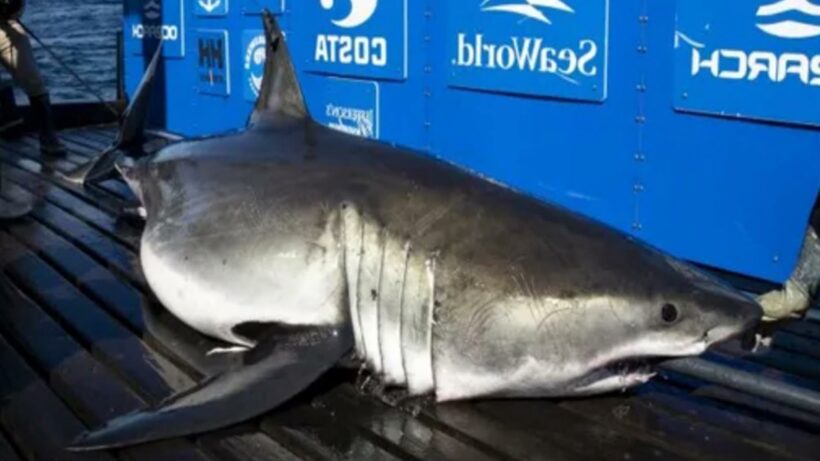A MASSIVE great white shark has been tracked off the coast of Florida as more swimmers venture into the water to cool off in the summer heat.
The monstrous great white has been found lurking near Florida’s Indian River lagoon system.
On Monday the giant shark, named Breton by OCEARCH, was spotted just 13 miles off the coast of Port St. Lucie in South Florida, reports Florida Insider.
Breton weighs almost 1,500pounds and is over 13 feet long. He was spotted dangerously close to the North Carolina coast in May.
In October of 2021, he was swimming in the northern waters of the Gulf of St. Lawrence in Canada.
The swim back to the sunshine state is about 1,500 miles.
Read more on Sharks
Sharks living inside ‘Sharkcano’ revealed as Nasa reveals eruption photos
Several sharks have been tracked to the waters off the coast of the Carolinas in the last two years.
In April, three great whites were tracked to a similar location, including the largest male shark to be tagged by OCEARCH.
Mahone, who measures 13 feet 7 inches and weighs 1,701 pounds, was joined by two smaller great whites.
Ulysses, a 12-foot, a 990-pound shark who was detected off the coast on April 6, and Tancook, a juvenile 10-foot, 715-pound shark pinged on April 10.
Most read in The Sun
'HE'S A PREDATOR' Comic Katherine Ryan 'confronted sex pest' on popular TV programme
UK's record £184m lottery winners make first big purchase – a £38k used Volvo
Corrie fans say the same thing as Leanne realises Toyah killed Imran
Love Island's Gemma Owen's family take drastic measures to save her career
Ironbound, a giant male great white shark weighing nearly 1,000 pounds, was tracked near the Gulf of Maine.
OCEARCH said the massive 12-foot 4-inch predator was pinged in the area last month.
Researchers first tagged Ironbound in October 2019 near Nova Scotia, Canada.
When the shark was first tagged, researchers described him as one of the "toughest sharks" they've ever seen, "especially considering his size."
Ocearch is a non-profit group that tags sea animals to collect data on them that can be passed on to scientists.
When a tagged shark swims close enough to the surface of the water, its tracker will "ping" to notify researchers of its location.
Much is still unknown about the great white species. Tagging the sharks helps researchers learn about migration habits, and how and where the sharks mate and raise their young.
The organization has a goal to tag 100 sharks throughout the western North Atlantic.
As the weather warms up, more swimmers are heading to the beach to cool down.
Vanessa Schiliro, a marine biology student doing her honors thesis on sharks, has shared some ways for swimmers to stay safe in the water.
The first thing is to decrease the odds of encountering a shark. Try to avoid areas where people are fishing with bait, or where there's a large population of prey, like seals.
Also, avoid wearing anything shiny. Sharks have terrible vision and could mistake it for the scales of a fish.
Read More On The Sun
Teen Mom Kiaya Elliott’s baby daddy released from prison after 4 years
Devastating update on sweethearts killed in shooting after heart-wrenching texts
If there is an encounter with a shark, the best thing to do is stay calm.Try to get out of the water as calmly and quickly as you can.
Making sudden frantic movements and splashing could increase the shark's curiosity and bring them straight to you.
Source: Read Full Article








